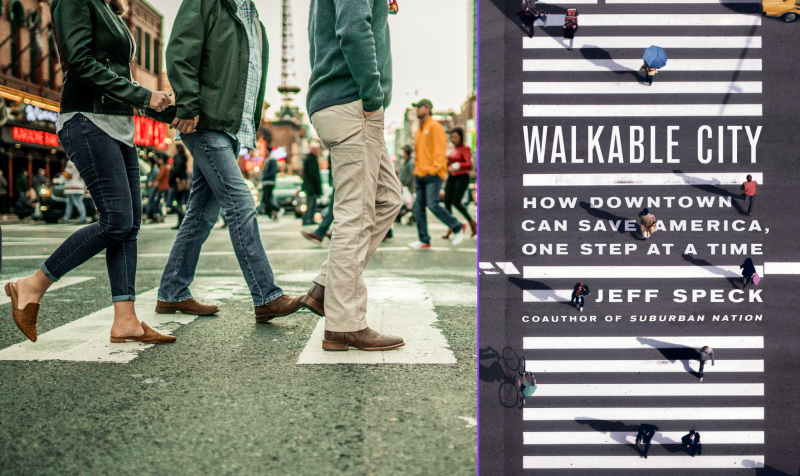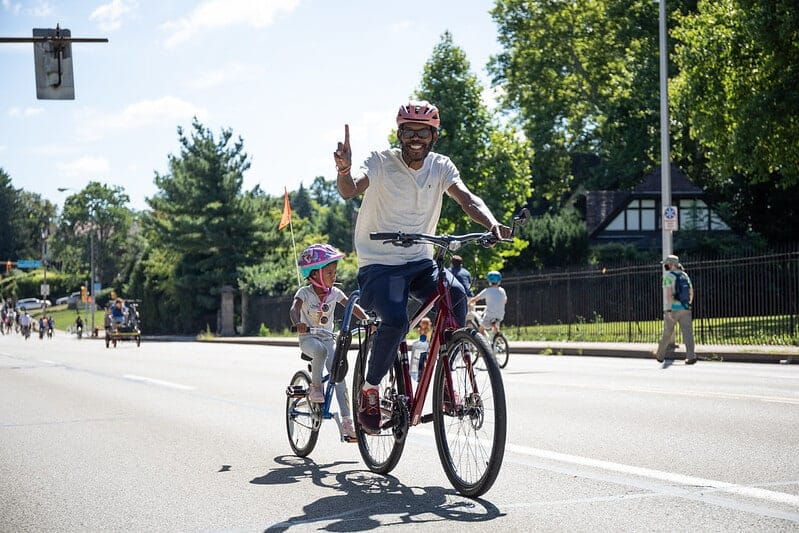
Here’s how equity and walkability are interrelated, and why it matters
by BikePGH Staff Contributor – Kéya Joseph, Events Director
In late 2022, author Jeff Speck released the tenth anniversary edition of his book Walkable City: How Downtown Can Save America, One Step at a Time, which includes over 100 pages of new material. I decided it was about time for me to read the whole book instead of just the excerpts I’ve read and nodded vigorously at over the past few years. Over the past decade Walkable City has become one of the most popular titles in urban planning, and Speck’s blunt assessments (along with 10 steps for improving street design) have influenced the efforts to improve safety and livability across US cities.
At BikePGH we are gearing up for another full OpenStreetsPGH season in 2023, so the walkability and safety of our streetscapes is at front of mind as we prepare routes, detours, and more for an event that will challenge the car-focused norm of our city for three afternoons this summer.

Health, wealth, sustainability and EQUITY
Now I won’t dive into most of the original book, but suffice it to say I am energized, educated, and ready to roll out the FACTS to anyone who tries to argue that car access is the only way cities can thrive. If you haven’t yet read it, I can’t recommend it enough. But what inspired me to write this blog was something that wasn’t covered in the original edition: the relationship between walkability and equity. It was refreshing to see an author re-examine his work through a new lens, admit he didn’t have the full picture, and make some necessary updates.
Walkable City’s updated chapters open with a frank admission from Speck. His book was focused on three main reasons for building walkable cities – health, wealth, and sustainability – but he forgot about equity. In his words: “Bringing this book up to date means correcting for both ten years of history and a lifetime of insufficient awareness about how car culture disproportionately punishes people of color and other marginalized communities”. How’s that for a starting point?

Infra-structural racism
Speck examines several ways in which minorities disproportionately bear the brunt of American car culture: entire Black neighborhoods displaced to build highway systems, doubling childhood asthma rates in the homes that remain less than 500 meters away, and stark contrasts in fatality and injury rates for BIPOC Americans. Low-income neighborhoods experience road fatalities at a rate more than 3.6 times higher than wealthier ones. Tragically, research shows that people of color are more than 54% more likely to be struck and killed by a vehicle while walking. This shocking inequity can be traced directly and indirectly back to the racist and classist policies of our history, such as urban renewal and redlining. These policies have left entire communities without sidewalks, maintenance, crosswalks, or other safety infrastructure. The result is “infra-structural racism”, a term coined by planner Destiny Johnson.

Invest in walkability
To end with a positive takeaway, there is a clear solution: continue investing in walkability, bikeability, and transit, and redesigning our cities to place people above cars. Investments in a community’s walkability can hugely and disproportionately benefit the most disadvantaged Americans. Investments in parking, roadways, and car culture only benefit cars. As Speck puts it: “Despite its populist image, driving trends rich and therefore powerful. Walking trends poor. Cities that hope to improve social equity should start there.”

Read the Book
Walkable City by Jeff Speck
Bursting with sharp observations and real-world examples, giving key insight into what urban planners actually do and how places can and do change, Walkable City lays out a practical, necessary, and eminently achievable vision of how to make our normal American cities great again.